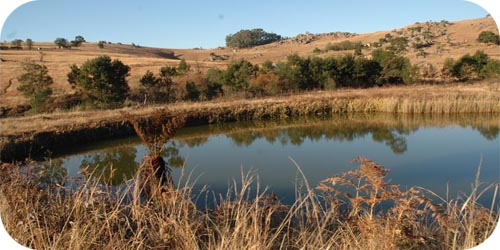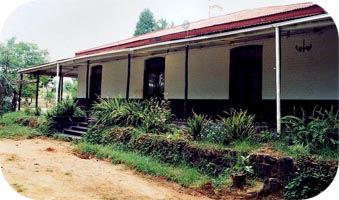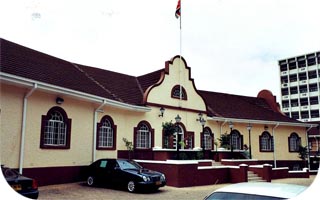National Monuments
The SNTC is charged with protecting Swaziland's cultural heritage. This includes protecting sites of cultural or religious significance. Three sites are currently proclaimed National Monuments and twelve are in the process of being proclaimed.
Monuments are of vital importance in educating the public on Swaziland's rich heritage, and are a source of national pride.
Declared National Monuments
At present there are three national monuments which have been proclaimed under the SNTC Act:

Mantjolo Pool
- A sacred pool outside Mbabane where the Mnisis clan may enter the spirit world. Known as Mantjolo Pool.
- A tree under which King Bhunu was investigated by the Boer Government in the 19th century. Nkoseluhlaza Street, Manzini.
- The site of Captain Gilson's house. The captain accompanied King Sobhuza to college in South Africa. Opposite SAWS in Mbabane.
Potential National Monuments
Sites for consideration as National Monuments where investigated by Richard Patricks and Bob Forrester in 2001.
These sites include natural sites (scenic, rare flora, flora, geology, etc.) and cultural sites (historic, archaeological, religious, etc.) or a combination of the two.
The following were amongst the most promising:

Allister Miller's house
- Allister Miller's House, Mbabane
- Mbabane Well, old bus rank
- Deputy Prime Minister's Offices and neighbouring building
- Manzini's oldest building (1897) - Commandant's Residence (at Zakhele)
- Second Legco Building, at Mbabane Magistrate's Court
- Notting Hill Mine Battery, near Piggs Peak
- Phophonyane Water Wheel
- Swaziland National Office at eNkanini (now re-surfaced in modern face-bricks)
- Mahamba Church - Swaziland's oldest church
- LaMgangeni's Burial Site, eGobholo
- Prince Fanyana Memorial Library, Kwaluseni
- Mabuda Estates farm house, Siteki
- Khambi's stone, eNtfonjeni

Deputy Prime Minister's Offices
Others:
- Lion Cavern, Malolotja - world's oldest mine (recommended to be a World Heritage Site)
- Sibebe Rock, Mbuluzi Valley
- eMgwayiza, Malolotja - afromontane forest, green chert
- Mehluko Hill, near kaMadlangamphisi - old fortress
- Manzamnyama Falls near Zombodze II (site of Royal ceremony)
- Mahamba Gorge
- Disused gold mines (generally active 1880 - 1920's) especially Piggs Peak Mine
- Various caves used by Swazis duirng wars e.g. eNcabaneni
- Great Usuthu (Lusuthu) Gorge, Bulunga Poort, between Sidvokodvo and Siphofaneni
- Sites of the oldest Royal Residences, Shiselweni Region
- Stone-built remains of Sotho-speaking clans (emakhandzembili)
- eNdzeleni, Ngwemphisi Valley - cliff with spectacular rock formations
- "Oldest farm house" at eMnyokane (belongs to Walter Bennet
- Balekane Mountain Fortress
- Khubuta Mines
- Von Steinacher's fort at Groenpan near Siteki
Note: Border Cave, site of the oldest known hominid/human remains is not in Swaziland, it is in the Ingwavuma district, in northern KwaZulu/Natal, about 100 m from the border with Swaziland.

